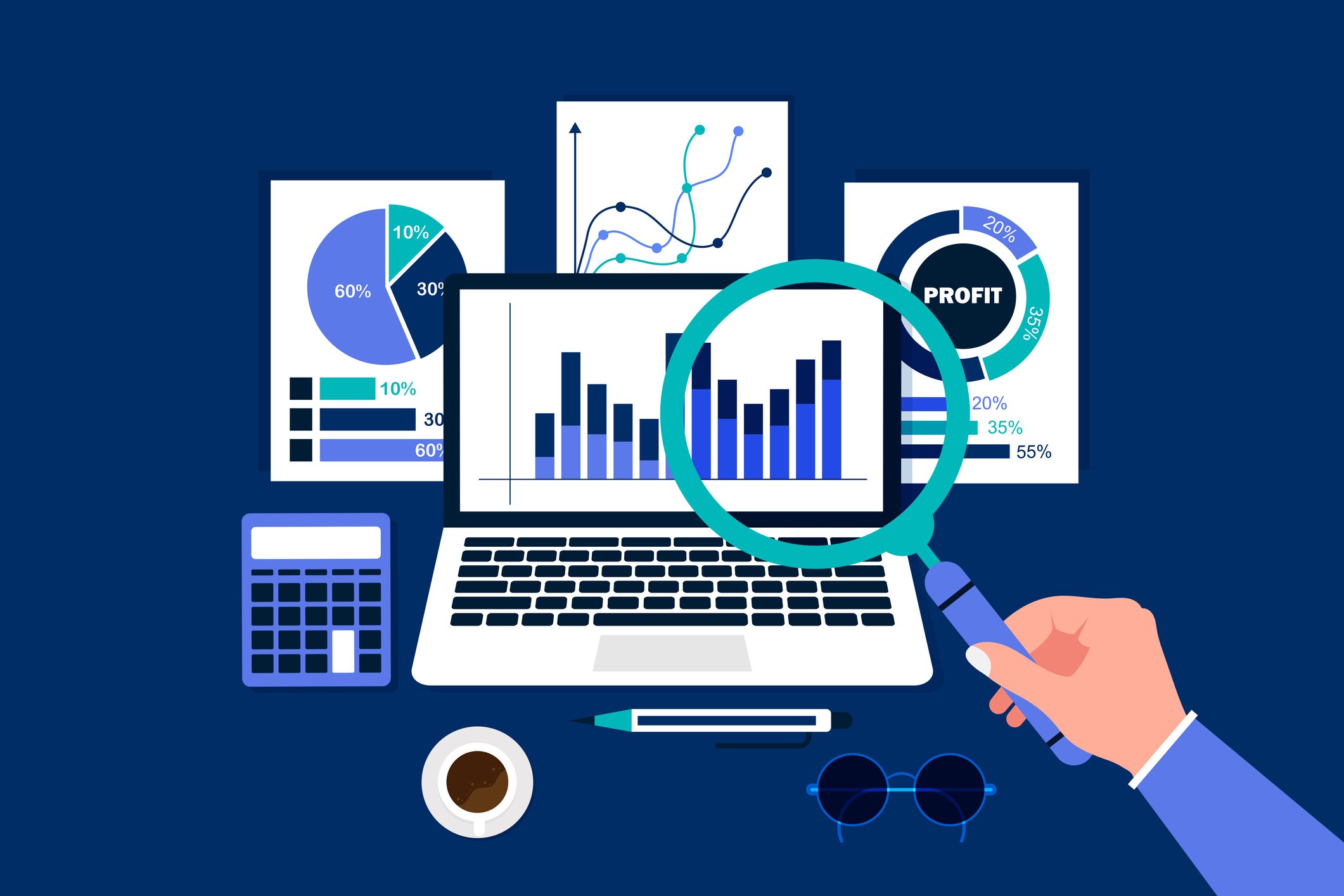
- December 2025 (1)
- November 2025 (2)
- October 2025 (3)
- September 2025 (3)
- August 2025 (3)
- July 2025 (2)
- June 2025 (3)
- May 2025 (3)
- April 2025 (3)
- March 2025 (2)
- February 2025 (1)
- December 2024 (2)
- November 2024 (1)
- August 2024 (2)
- June 2024 (3)
- May 2024 (3)
- April 2024 (1)
- March 2024 (3)
- February 2024 (2)
- January 2024 (2)
- December 2023 (1)
- November 2023 (2)
- October 2023 (2)
- September 2023 (1)
- August 2023 (1)
- July 2023 (2)
- June 2023 (3)
- May 2023 (2)
- March 2023 (4)
- January 2023 (2)
- November 2022 (2)
- September 2022 (1)
- August 2022 (2)
- July 2022 (2)
- June 2022 (1)
- May 2022 (1)
- April 2022 (3)
- March 2022 (1)
- February 2022 (3)
- January 2022 (2)
- December 2021 (1)
- November 2021 (1)
- October 2021 (2)
- September 2021 (3)
- August 2021 (1)
- July 2021 (3)
- May 2021 (2)
- April 2021 (2)
- March 2021 (2)
- February 2021 (3)
- January 2021 (3)
- December 2020 (1)
- October 2020 (1)
- August 2020 (1)
- August 2019 (1)
- January 2019 (2)
- September 2018 (5)
- June 2018 (1)
- November 2017 (1)
- September 2017 (1)
- July 2017 (1)
- May 2017 (1)
- January 2017 (1)
- October 2016 (2)
- August 2016 (1)
- July 2016 (1)
- June 2016 (1)
Subscribe by email
Whether you're managing thousands of IoT devices, providing cloud-based APIs, or delivering telecom services, usage-based billing empowers businesses to align revenue directly with customer value. Many traditional telecom pricing models are unequipped for the volatility, complexity, and nuance demanded by the modern interconnected world. These outdated billing methods force customers to adopt strategies that inhibit their growth and limit their efficiency. New and emerging technologies require flexible, dynamic invoicing that allows for rapid and agile deployment, ongoing scalability, and promotes customer engagement and loyalty.
Usage-based billing is a pricing model that charges customers based on how much they actually use a service or resource. This consumption-focused pricing model is especially advantageous for companies that see a high degree of usage variance across their customers. Usage-based billing offers businesses an adaptable, customer-centric solution and provides IoT and telecom companies with an alternative to fixed-rate invoicing.
In this post, we'll explore how usage-based billing works, the benefits of the model, and what challenges you should consider before implementation. From selecting the best per-unit value metric to assessing customer behaviors and expectations, we’ll break down everything you need to evaluate whether usage-based billing is a smart fit for your IoT application.
Key Takeaways:
-
Usage-based billing aligns price with value: Customers only pay for what they consume, promoting transparency and stronger trust between providers and end-users.
-
Usage-based billing is ideal for IoT and telecom deployments with variable demand: This model works best when device activity, data consumption, or customer needs fluctuate widely across users.
-
Usage-based pricing is flexible, transparent, and scalable: This model empowers customers to track and control costs in real time through transparent pricing and dynamic usage dashboards, while giving providers a scalable pricing strategy that grows with customer adoption and demand.
-
Usage-based billing often improves retention and reduces churn: Transparent “pay-as-you-go” pricing encourages adoption, reduces churn during low-usage periods, and strengthens long-term loyalty. in deployments with seasonal or even-driven variability
-
Usage-based billing supports diverse billing structures: IoT and telecom businesses can tailor pricing using fixed per-unit rates, volume-based discounts, tiered thresholds, or overage-based models, adapting to everything from pay-as-you-go to hybrid subscription frameworks.
What is usage-based billing?
Usage-based billing is a billing model where customers are charged based on their actual resource or service consumption rather than paying a fixed subscription rate or flat fee. Customers are billed directly proportional to their actual usage. This “pay-as-you-go” model offers flexibility to customers with fluctuating patterns of consumption.
Usage-based billing is a popular pricing model because of its transparency, scalability, and simplicity. Customers receive measurable billing tied explicitly to usage metrics, reducing confusion. They can also track their usage in real-time, adjusting their behaviors to align with their budgetary goals and giving them enhanced control over their expenses. This model also allows service providers to adjust prices directly related to demand and capacity, allowing them to scale easily despite variance in service utilization.
What industries utilize usage-based billing?
Usage-based billing is most commonly seen in cloud computing services, telecommunications, IoT devices, Software as a Service (SaaS) companies, and utilities. In these industries, customer consumption patterns and resource usage vary widely. Usage-based billing is most successful for applications with a high degree of data transmission variability, high or rapidly growing device deployments, real-time and event-based services, and those that serve customers with different demands and sizes.
How does usage-based billing work?
Usage-based billing charges customers according to how much they utilize a service or product. Companies identify quantifiable units, define their price, and then continuously track customer usage throughout a billing cycle. Customers are then billed for their total usage and typically provided with billing and analytical dashboards to track usage patterns, real-time consumption, and upcoming charges.
1. Establish quantifiable usage metrics
A company identifies what usage metrics it plans to use to monetize its product. This unit of consumption is called the “value metric” and is the primary feature that differentiates usage-based billing from subscription and flat-rate pricing models. Value metrics should be easily identifiable, simple to understand, and directly correlated to the customer’s perceived benefit of the product or service.
These usage metrics must also be quantifiable and easily segmented into specific units. This could include the number of users, the number of events processed, or the volume of data consumed, storage space, computing hours, API calls, or electricity used. Some companies may bill a single customer for multiple resources (like storage and processing power, for example).
IoT and telecommunication companies most commonly use data consumption as a value metric for billing. This can also be communicated downstream to IoT end-users in brand-specific units and terms, for example, a trail camera may bill its users a “per photo” rate.
2. Define pricing tiers
After establishing value metrics, companies need to structure their pricing models by defining pricing rates per unit of usage and setting any applicable tiers or progressive rate changes.
Fixed per-unit pricing
Fixed per-unit pricing charges customers a set amount for each unit consumed. This could a gigabyte of data storage, a user on a SaaS platform, or an API request. These prices remain uniform, regardless of external factors or usage amount. Many usage-based IoT applications use fixed per-unit pricing, processing and invoicing each data request at one rate.
Volume-based and tiered pricing
Volume-based and tiered pricing still bill customers per unit, but the rates change based on the amount used. Some usage-based billing incentivizes customers to make greater use of the products and services by reducing per-unit pricing and offering volume discounts. For example, a cloud storage platform may charge $0.023 for the first 0-50 TB/month, $0.022 for the next 50-450 TB/month, and then $0.021 for each terabyte over 450. This rewards high-volume users and encourages customer loyalty and service utilization.
Other tiered pricing models try to discourage overuse by increasing per-unit consumption costs. This is often seen with utility companies and sustainability initiatives, which may charge households higher rates per kWh if they are over a 1000 kWh monthly threshold.
Overage-based billing
Overage-based billing allocates customers a fixed quantity of units, with additional overage charges applied for any surplus usage within a specified billing cycle. This combines fixed-based allowance billing with usage-based billing models. This is common in telecom and IoT services, where predictable use is expected, but abnormal usage spikes are monetized. For example, an IoT device plan may include 1,000 data transmissions per month as part of the standard monthly plan, but charge an additional $0.05 per additional transmission. This method is a good fit for applications where users typically stay within limits but sometimes need flexibility, encouraging efficiency and preventing system overload.
3. Implement measurement and monitor customer usage
Companies implement usage measurement through robust monitoring tools and software. These systems continuously record customer consumption, track customer activity, and maintain up-to-date usage records. Accurate data collection is crucial for the success of usage-based billing. Undercharging for data consumption leads to inefficiencies and lost revenue, while overcharging users will cause high customer churn and erode brand trust.
4. Invoice customers and provide transparent reporting
Customers receive an invoice for the total per-unit usage in real-time, after reaching a set threshold of unit consumption, or at the end of a billing cycle. These cycles can be contractually predetermined, like recurring monthly or annual charges. These invoices should reflect exact usage and show any applicable rate multipliers that influence pricing.
Customers should also be able to access dynamic dashboards and customizable reports. Analytics platforms allow end-users to track usage patterns, optimize consumption, and forecast future costs. This is a crucial competitive advantage, especially since usage-based billing has far more monthly variance than fixed-rate and subscription models. Customers can leverage these insights to predict their upcoming charges more accurately and make data-driven decisions to scale their service utilization.
What are the benefits of usage-based billing?
Usage-based billing offers distinct strategic and financial benefits to companies and their customers. Usage-based billing models empower customers to manage and optimize usage and control their costs through transparent pricing. The model offers companies flexible monetization strategies that can be tailored to their unique business offerings.
1. Allows for granular monetization
Usage-based billing lets you charge for specific, high-value interactions and data requests, like API calls and sensor events. Rather than bundling services into one flat fee, usage-based billing gives SaaS, telecom, and IoT companies granular control over how they bill their customers and monetize their platforms.
2. Aligns price and value for broader market reach
Customers only pay based on the value they receive and the resources they consume. This encourages customer trust and provides a more responsive, flexible approach to billing compared to rigid models. Usage-based pricing also typically provides users with lower upfront costs and fewer barriers to entry compared to fixed pricing.
Customers who may be hesitant to pay flat rates for untested services could be more receptive to trying a service directly tied to usage metrics. They may also be motivated to experiment with additional features and services if they’re only charged for direct usage.
3. Improves efficiency and minimizes waste
Usage-based billing facilitates improved efficiency by ensuring businesses receive compensation directly linked to consumption. Flat-rate services can result in financial loss if increased or unpredictable customer usage impacts a company's expenses. Usage-based pricing greatly reduces this risk by billing by the predetermined unit.
Fair, transparent pricing means end-users do not have to pay for unused capacity or features, eliminating overpaying. Since they are billed by the unit, they may be more mindful of consumption habits. This eliminates the problem of data overusage driving up costs, a problem many IoT and cloud companies face.
4. Promotes customer retention and reduces churn
Customers are more likely to remain engaged with services and devices that adapt to their changing needs. A subscription model typically bills users fixed rates, regardless of usage, causing them to suspend or cancel services during periods of lower utilization. However, if customers are only billed for their usage, they can reduce their consumption rather than halt it completely. This responsiveness builds brand loyalty and fosters long-term relationships.
5. Scales with customer growth automatically
Company revenue automatically scales as customer usage increases. This lets businesses start small and nurture client relationships without requiring contract renegotiations or substantial initial investments. This is critical for many IoT deployments.
6. Adapts to market changes and customer behavior
The naturally adaptive structure of usage-based pricing lets companies fluidly adjust to market changes. Pricing tiers can be altered due to shifts in demand, customer behavior, and competitive pressure. Rather than overhauling contracts, usage-based pricing allows for the gradual implementation of pricing changes without requiring upselling.
For example, ridesharing apps have demonstrated this with “surge pricing” models, where fare costs escalate during periods of higher usage. The usage-based billing model adapts dynamically with demand, without requiring businesses to anticipate the future.
What are the challenges of usage-based pricing?
Despite its advantages, usage-based pricing is not optimal for every IoT deployment, cloud computing service, or telecom enterprise. While broadly adopted by many in these industries, there are many use cases where alternative models (like subscriptions or fixed-rate billing) are more appropriate.
1. Unpredictable revenue and cash flow insecurity
Usage-based revenue fluctuates depending on customer usage. For some businesses, this can result in significant variances in monthly revenue and make profit forecasting more challenging. While usage spikes may create periods of unexpected growth, unplanned usage dips can cause financial strain.
For businesses that are reliant on steady cash flow or in the early stages of development, this volatility can present problems. Subscription and fixed-rate billing models offer more consistent monthly revenue patterns. Some companies implement base fees or minimum commitments to better establish predictability.
2. Complex infrastructure and billing
Tracking every byte, signal, or event in near real-time adds complexity. If your system cannot support an infrastructure that handles detailed usage logs, accurate invoicing, and robust metering, you will be unable to properly monetize your services. This will result in revenue loss or overcharging users. Inefficiency and inaccuracy will frustrate customers and can divert internal time toward billing error disputes and resolutions.
Usage-based billing also requires dynamic billing platforms that can flexibly scale with customer growth, track diverse consumption patterns, and appropriately map data to pricing rules (like tiers and overages). Without a streamlined billing solution in place, invoice management will become tedious and overly complicated.
Is usage-based billing the right solution for your IoT application?
Usage-based billing is an excellent way for IoT companies to monetize their devices and maximize downstream revenue. Usage-based billing is an excellent fit for IoT applications with high variable usage across customers and clear, quantifiable per-unit metrics.
High usage variance
When data consumption and device activity differ greatly across your customer base, usage-based billing is a solution that provides transparency and fairness to your customers. This pricing model further ensures you maximize revenue opportunities.
Quantifiable units of value
If your back-end infrastructure is designed to track the number of connected devices, the data they transmit by unit of measurement (like megabytes or gigabytes), unique sensor events, and API calls, you can leverage these insights into establishing per-unit pricing and corresponding usage-based billing.
Low entry barrier needed
Usage-based billing allows new and smaller IoT businesses to deploy earlier and sustainably scale. The pricing model lets device manufacturers monetize data usage to fund their IoT enterprise, allowing them to iterate and innovate faster. The low barrier of entry and cost commitment from the end user also encourages faster and more widespread adoption. However, it also works for massive IoT deployments. These larger undertakings can determine their per-unit pricing costs and apply it across the scope of their deployments, ensuring revenue collection regardless of individual customer size or consumption.
Learn more: Are Telecom Expense Management Systems A Fit for IoT Business Models?
What are examples of usage-based IoT applications?
Remote monitoring
Remote monitoring IoT devices, like surveillance and security systems, trail cameras, and asset trackers, frequently use usage-based billing to monetize their downstream services. Value metrics may be based on the number of photos or video clips, the number of motion detection events triggered, and the size of saved files. For example, a trail camera may charge users per photo, a value metric that will fluctuate depending on seasonality.
Digital signage & media
Festivals, concerts, arena shows, corporate events, and sports broadcasts occur at different times, in front of diverse audiences, and feature an array of media. This will all result in spikes in data usage by IoT digital signage devices, as these data plans may only cover a specific weekend. Usage-based billing allows advertisers to leverage these technologies to capitalize on these large events while remaining efficient. For example, a venue may heavily use their signage the weekend of a big sporting game, and then be completely offline the following weekend, necessitating a flexible model of data tracking and invoicing.
Smart utilities
Smart utility monitors that track electricity, water, and gas may incorporate usage-based pricing into their billing models. This can include billing per kWh of energy or gallon of water consumed, as well as value metrics like meter readings, data transmissions, sensor activations, or device uptimes. For example, a smart meter company may bill utilities based on the volume of data readings sent from properties throughout a day, in addition to the actual utilities consumed. If a single customer is managing multiple vacation properties, this can result in widely varying usage during peak travel months compared to the off-season.
How to maximize usage-based billing with Zipit Wireless
Zipit Wireless is a global provider of connectivity and billing solutions for IoT device manufacturers. We’ve partnered with cutting-edge innovators that span diverse industries, from home healthcare and smart agriculture to utility monitoring and surveillance technology. We engineer solutions to help industrial and consumer IoT clients launch their IoT business, achieve sustainable growth, and effectively monetize their services. Through our robust carrier contracts, our global connectivity service options, and our connectivity management and billing platforms, we create meaningful, customized solutions for every client’s unique needs.
Our billing platform supports customers who want to employ usage-based billing to capture downstream revenue opportunities. This all-in-one billing experience simplifies operations, offering consolidated invoicing, merchant of record services, and customized billing cycles. Zipit Wireless automates the labor-intensive processes of usage tracking, ensuring your business can launch usage-based billing backed by precise data-driven information.
We’re committed to helping IoT OEMs maximize their monetization, and we will partner with you to ensure that your billing solution closely aligns with your strategic goals. Even if usage-based billing is not the best fit for your application, our platform supports flexible subscription services, fixed-rate services, and hybrid invoicing models.
Our billing platform offers a wide range of services that extend beyond usage tracking. Our offering incorporates SIM management, brand-customized interfaces and checkouts, analytical insights, and customer self-service activations, to highlight a few examples of our commitment to customer success.
If you are interested in learning how Zipit can help you maximize recurring revenue opportunities, contact us to explore your business’s potential.
You may also like:
Related Content
The latest IoT insights and platform updates from Zipit.
The Internet of Things (IoT) is transforming how businesses operate, compete, and ...
Consumer IoT embeds smart connectivity and automation into familiar products. From...
OSS (Operational Support Systems) and BSS (Business Support Systems) in telecom em...



